

Nowadays, you don’t have to drop a ton of cash on a premium laptop to get everything you need. It’s entirely possible to get an excellent laptop for under $1,000. Whether you’re talking about a traditional Windows clamshell or a fully loaded Chromebook, spending less than a grand can get you a laptop you’ll enjoy using. Moreover, at this price point, you don’t have to sacrifice your budget to get excellent performance, a crystal-clear screen, or long battery life.
The overwhelming amount of options on the market now means that it can take some time to find the right model for you, so we’ve highlighted our top picks to make the search easier. Read on to find your match. Additionally, if you’re interested in finding laptop recommendations that span all price ranges, see our roundup of the best laptops.
It’s also back to school time and that means you can score some killers deals on laptops. Be sure to check out our roundup of best back to school deals.
Updated 08/14/2023: To include the Asus Chromebook CM34 Flip as our new pick for best battery life. Read more about this long lasting, affordable new pick in our summary below.
Acer Swift 3 – Best for college students
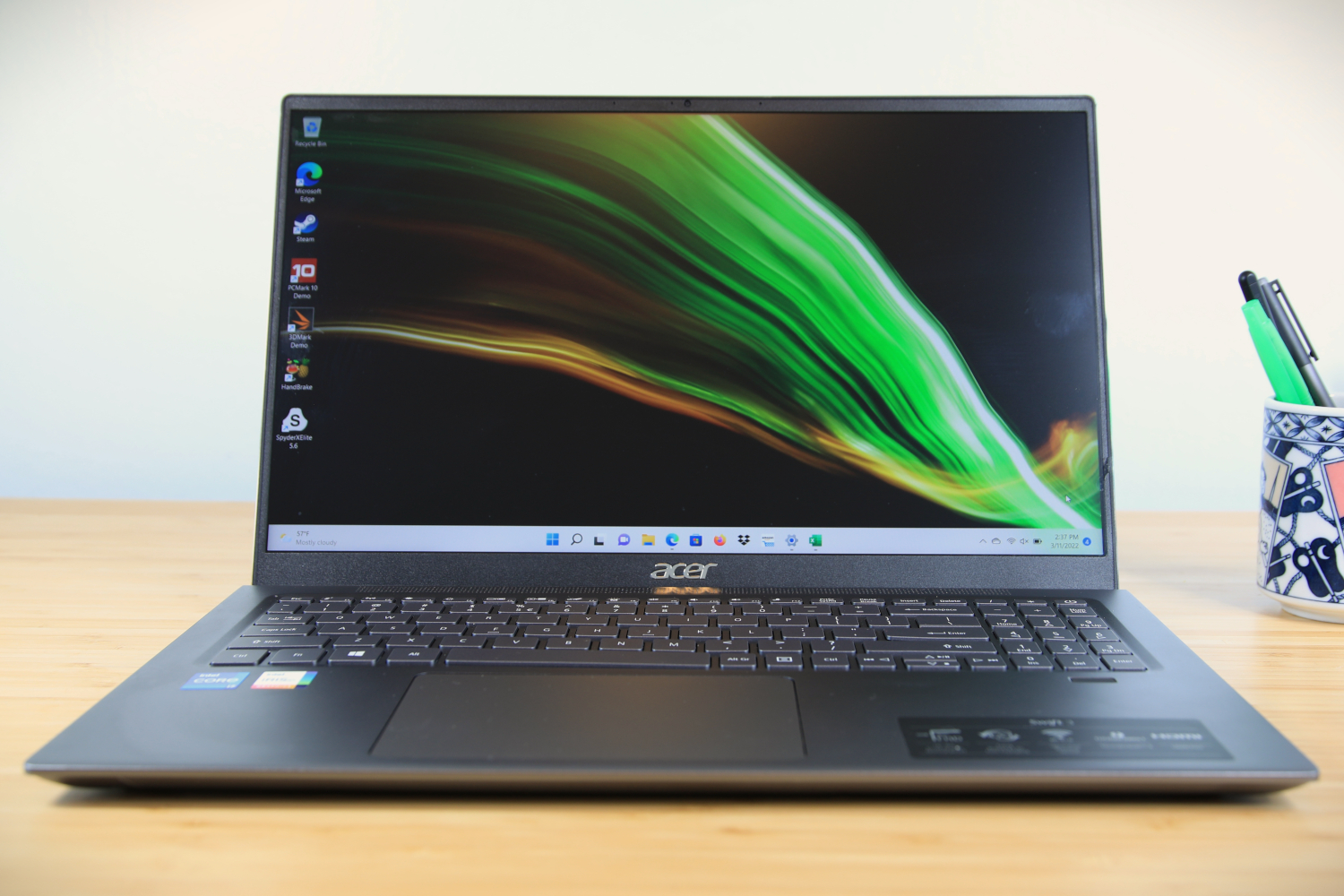
Pros
Solid chassis and build quality Large, attractive 16-inch 1080p screen Enjoyable keyboard and touchpad USB-C with charging and DisplayPort
Cons
Webcam, microphone, and speakers don’t impress Intel processor falls behind AMD alternatives Disappointing battery life Lots of bloatware Price When Reviewed:$999Best Prices Today:$899 at Amazon$925.64 at Walmart
If you’re a college student working with a modest budget, the Acer Swift 3 is a fantastic option. It features an attractive 16-inch 1080p display, a solid chassis, and an enjoyable keyboard and touchpad. However, battery life is subpar, so you’ll want to keep the charger on hand. This is unfortunate, as the Swift 3’s slim profile makes it a good laptop for travel. If you don’t mind the lackluster battery life, this is a great laptop for watching movies and writing research papers on.
Read our full Acer Swift 3 SF316-51 review
Asus Vivobook Pro 15 – Best gaming laptop under $1,000
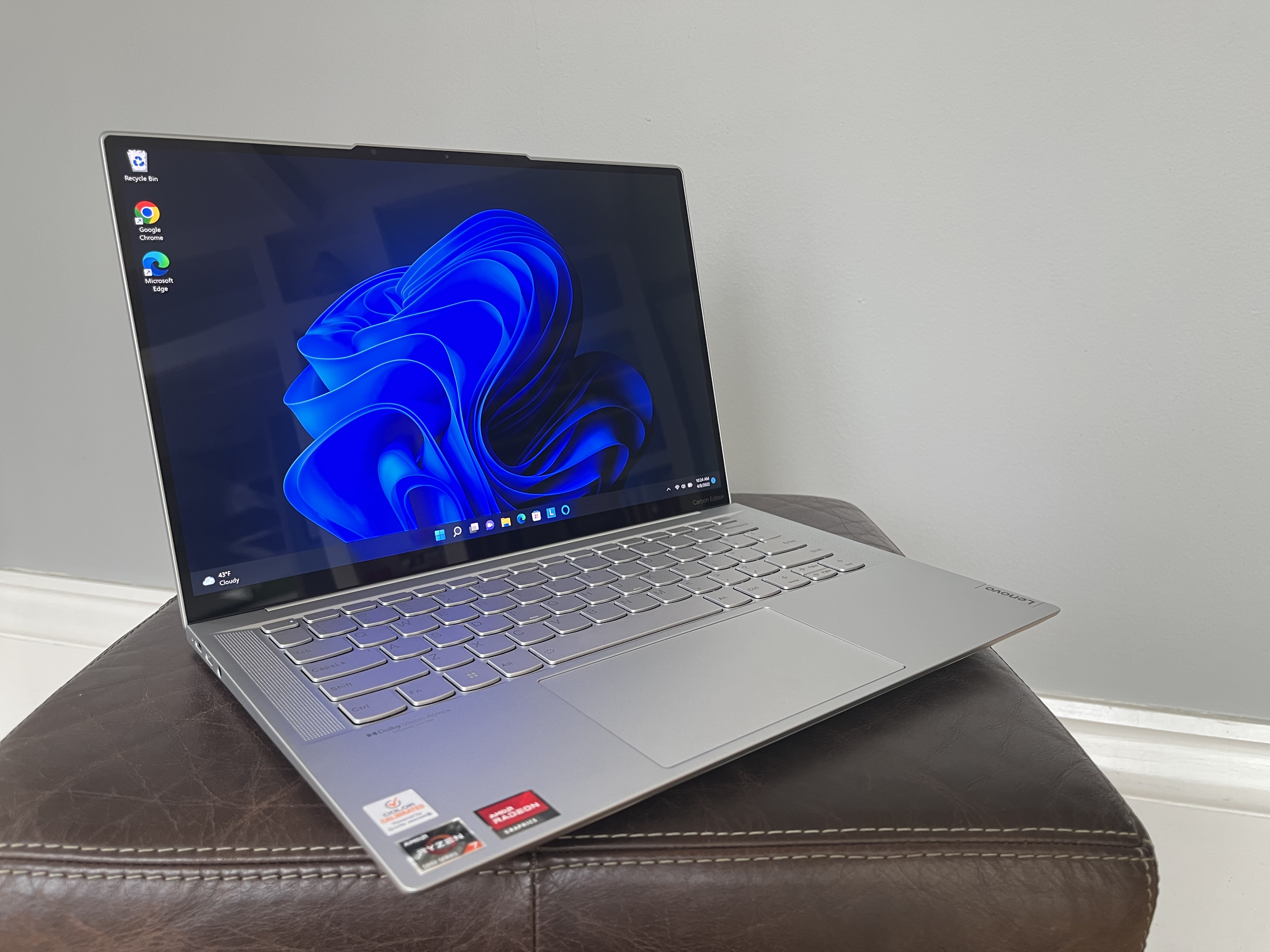
Pros
Good productivity performance Superb display Rugged design Great battery life
Cons
Boring aesthetics Unimpressive 720p webcam Unreliable fingerprint scanner Poor port selection Price When Reviewed:$1099.99Best Prices Today:$919.99 at Asus$919.99 at Best Buy$1269 at Walmart
The Asus Vivobook Pro 15 provides an outstanding price-to-performance ratio. Sporting a Ryzen 7 processor, an RTX 3050 GPU, 16GB of RAM, and a 512GB M.2 NVMe hard drive, this laptop includes a lot of the same performance components of higher-end alternatives but for much cheaper. While the performance features are admirable, what makes the Vivobook Pro 15 stand out from the rest of the sub-$1,000 crowd is the stunning 15.6-inch OLED display. It’s almost unheard of to get an OLED screen on a laptop for this price and it doesn’t disappoint either, giving crisp visuals and a near-perfect contrast ratio.
The overall design of the Vivobook Pro 15 is a little lackluster, but that’s not what this laptop is about. Asus wasn’t trying to beat premium laptops on design or build quality with this model. They instead wanted to load it with so much power and performance that the design doesn’t didn’t matter—and it was a success. For the price of a budget-friendly gaming laptop, the Asus Vivobook Pro 15 gives you the power and features of a much more expensive midrange option.
Read our full ASUS VivoBook Pro 15 OLED Ultra Slim Laptop review
Acer Aspire 3 – Best under $500
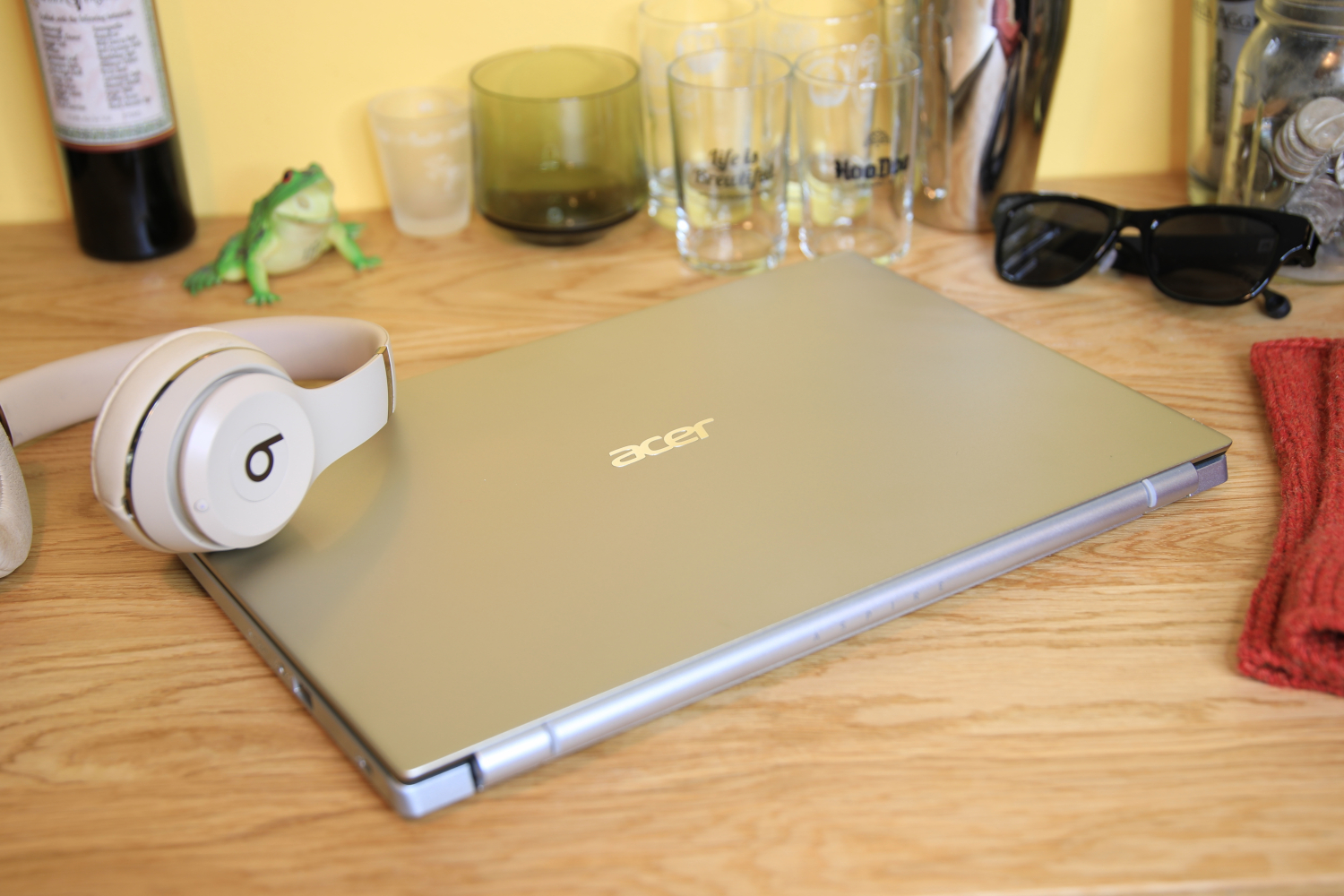
Pros
Spacious keyboard with number pad HD webcam Solid video playback performance Decent business app performance Workday-long battery life
Cons
Poor gaming graphics performance Basic 1080p display Small 128GB storage drive Price When Reviewed:$329.99Best Prices Today:$299.99 at Amazon$329.99 at Acer Online Store$384.99 at Walmart
Maybe you’re looking for a budget laptop, but only need the basics. Well, with its affordable price point, decent performance, and robust build, the Acer Aspire 3 is an excellent option for under $500. In our testing we were surprised by its solid, durable feel and suitable work productivity performance. The spacious full-sized keyboard and trackpad is quite nice, too. While the battery isn’t outstanding, our tests showed that it can provide up to eight hours of charge without having to be plugged in—that’s solid and enough for most full workdays. Performance is fast enough for general-use tasks like writing emails and browsing the web, but that is about the limit. Still, if the basics will do and you’re shopping around for a solid everyday laptop that won’t break the bank, the Aspire 3 is definitely worth a look.
Read our full Acer Aspire 3 review
Lenovo Chromebook Flex 5 – Best Chromebook
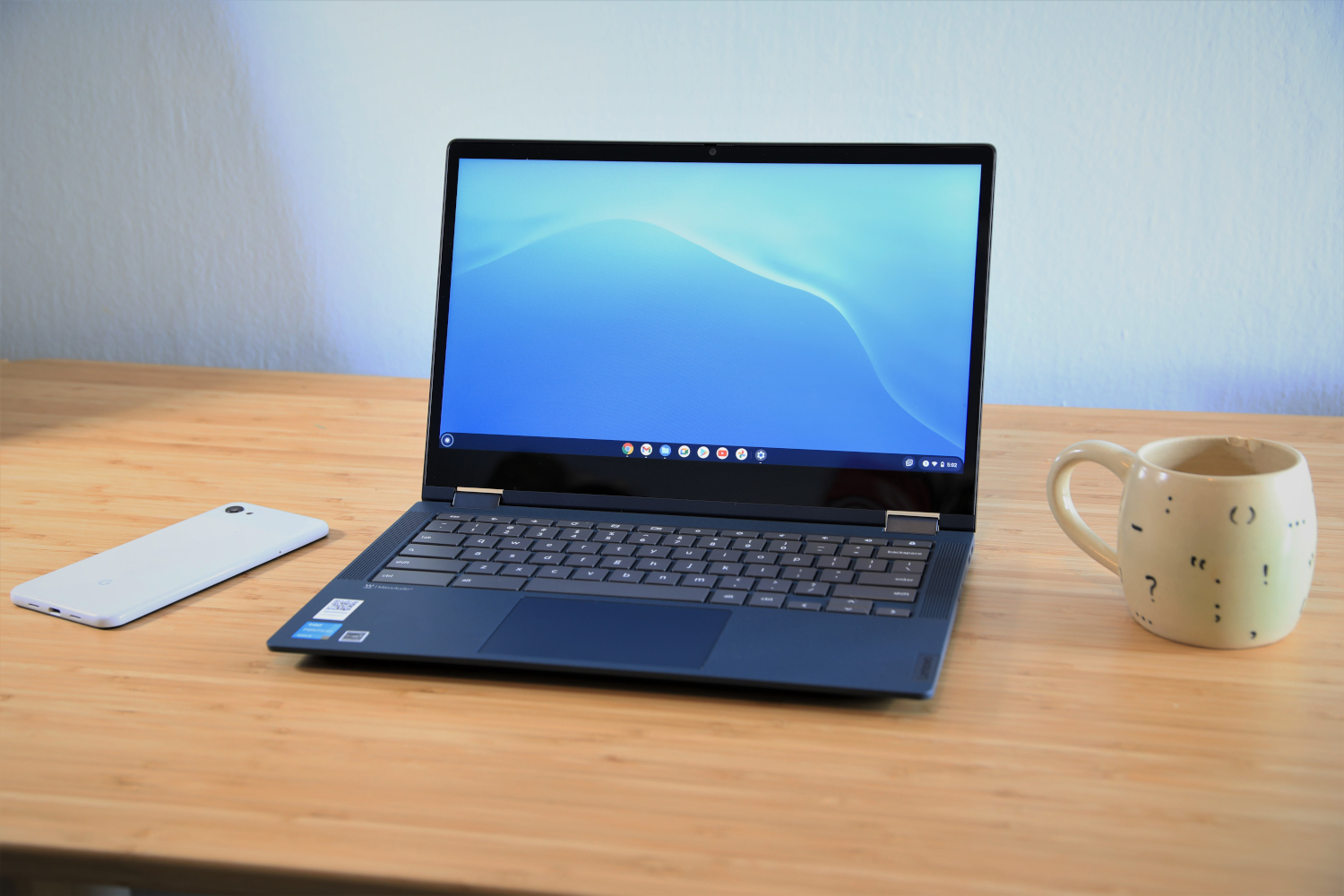
Pros
Attractive design Affordable Punchy audio Excellent keyboard
Cons
Mediocre performance Subpar battery life Price When Reviewed:$389Best Prices Today:$344.97 at Walmart$365 at Amazon
The Lenovo Chromebook Flex 5 is a good mid-range Chromebook. It’s fast enough for web browsing, editing documents, and so on. That said, it can “feel taxed by demanding tasks.” When our tester opened up multiple tabs, he noticed a sag in performance. The port selection, however, is nice combination of old and new. It has two USB-C ports, a single USB-A port, a 3.5mm combo audio jack, and a microSD card reader. As for the keyboard, our tester liked the “crisp and taut” feel of the keys. Although this laptop is a 2-in-1—meaning the screen can fold back to make it function more like a tablet—it weighs about 3 pounds, which is on the heavier side for a convertible laptop. It may not be the most portable laptop in the world, but that flexibility can still be nice for applications that favor a tablet form factor.
Read our full Lenovo Chromebook Flex 5 review
Asus Chromebook CM34 Flip – Best battery life
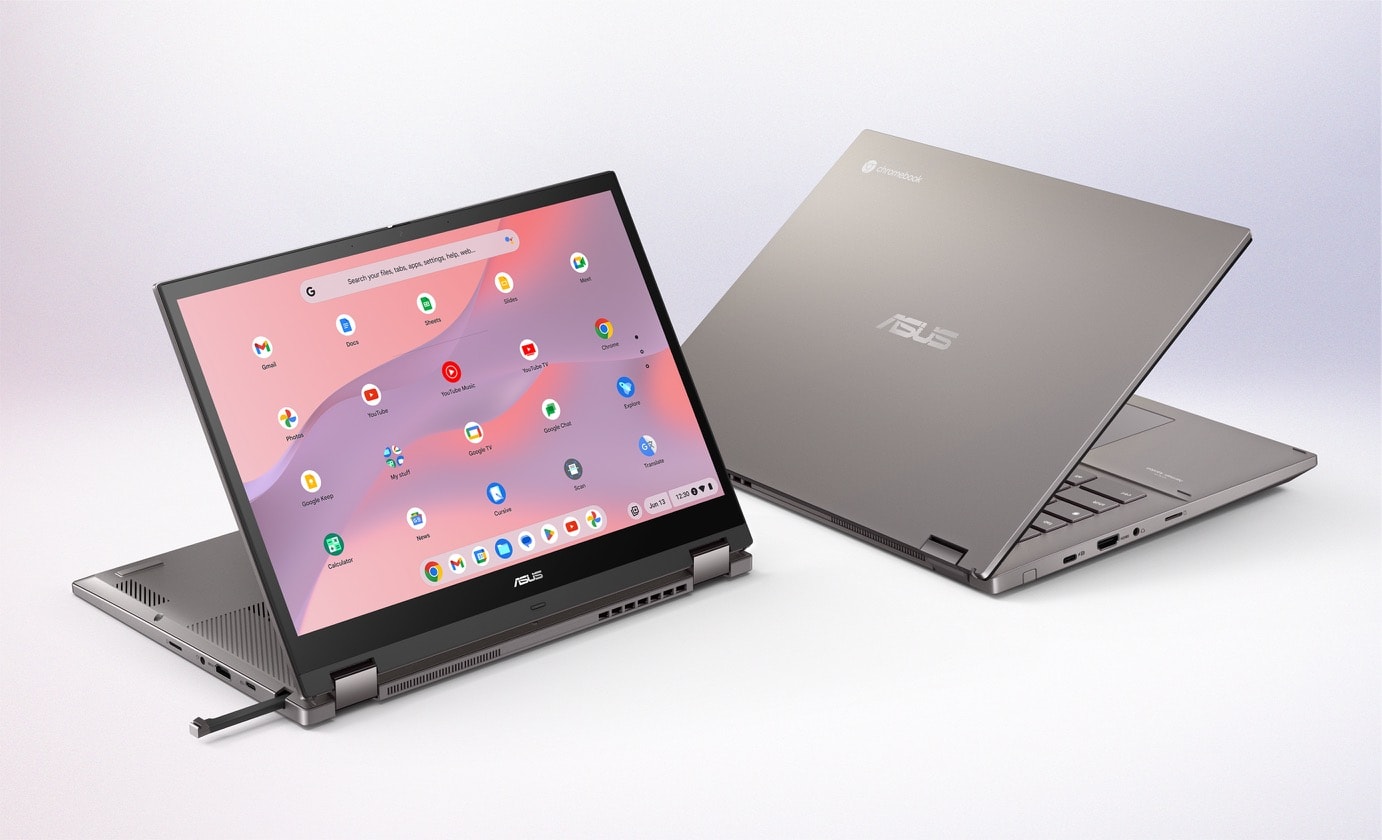
Pros
Spectacular battery life Spacious touchpad 1080p webcam Lovely display
Cons
Heavier than expected Display is too reflective in outside environments Middling performance Price When Reviewed:$499
The Asus Chromebook CM34 Flip could give the Energizer Bunny a run for its money. In our testing the battery on this Chromebook lasted an astonishing 19 hours on a single charge—we even had to run the benchmark twice just to make sure. That’s absolutely ridiculous. If a laptop battery can eek out 10 hours on a single charge it’s considered long-lasting but the CM34 Flip almost doubles that number.
This affordable 2-in-1 Chromebook doesn’t lack for performance either, featuring an AMD Ryzen 3 7320C CPU and 16GB of RAM. It even sweetens the deal with a colorful touchscreen display, comfortable touchpad, and high-quality 1080p webcam. Weighing in at just over 4 pounds, it’s not the most portable though. But if you’re on the hunt for a long-lasting everyday machine that won’t break the bank, you can’t get much better than the CM34 Flip.
Read our full Asus Chromebook CM34 Flip review
HP Chromebook x2 11 da0023dx – Best folio-style Chromebook

Pros
Gorgeous 2K touchscreen Solid performance Excellent battery life Robust design
Cons
Trackpad is too sensitive at times Light on ports Price When Reviewed:$599Best Prices Today:$9.99 at Walmart$208.88 at Amazon
Ah, folio-style laptops. While some may find the detachable-keyboard design a pain to deal with, our reviewer really liked this one. The HP Chromebook x2 11 is one of the best 2-in-1 laptops you can buy. The tablet’s aluminum chassis feels rugged and like it’ll last quite a while. The detachable keyboard took some getting used to, but ended up being fine for long typing sessions. The rear plate, which transforms into a kickstand that holds up the tablet for hands-free use, connects to the back of the tablet via magnets. The reviewer found the connection to be both clean and strong. As for the performance, it’s about what you’d expect out of a Chromebook. It’s zippy enough for everyday tasks like browsing the web and so on.
Read our full HP Chromebook x2 11 review
Acer Aspire Vero 14 – Best eco-conscious option
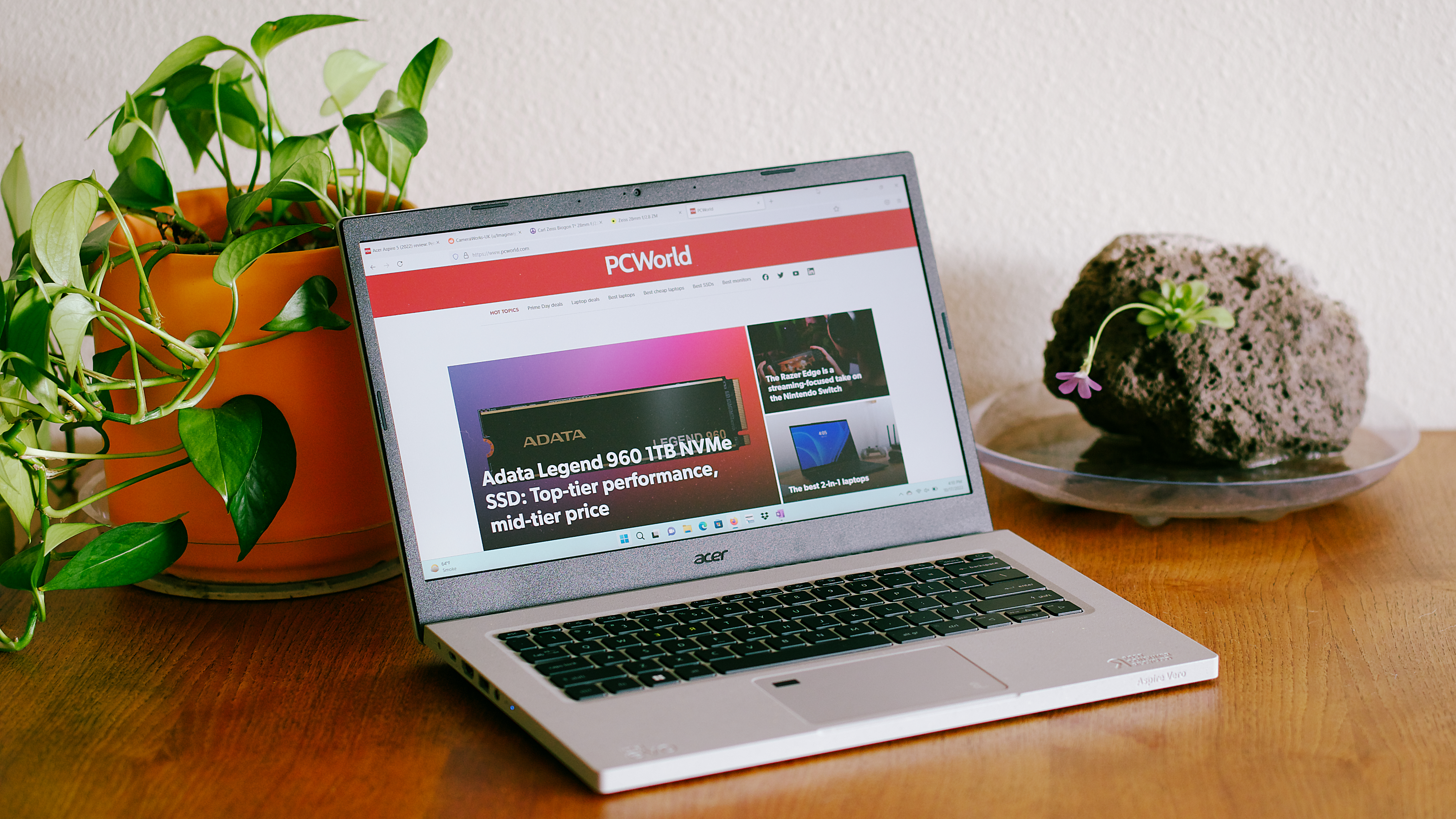
Pros
Peppy performance Strong battery life Thunderbolt 4 Eco-friendly materials Convenient, fast fingerprint reader
Cons
Bloatware Weak speakers Soldered-on RAM, not upgradeable Price When Reviewed:$899.99Best Prices Today:$849.99 at Costco$899.99 at Acer
For those who demand that their technology be manufactured in a more eco-conscious way, the Acer Aspire Vero 14 is for you. Made from 30 percent post-consumer recycled materials, it is blazing a path for more eco-friendly options in our personal electronics. It’s no slouch in the performance department either, sporting a Core i7 CPU, Intel Iris Xe Graphics, a solid 16GB of RAM, and a surprisingly large 1TB M.2 SSD. The only real drawbacks are the odd decision from Acer to solder on the RAM so it can’t be upgraded in the future, and the fact that it comes with some unwelcome bloatware. But both issues are minor and the bloatware can be removed with just a little bit of effort after purchase. Overall, the Acer Aspire Vero 14 provides decent performance and makes the decision to buy a new computer weigh a little less on your conscience thanks to its eco-friendly design.
Read our full Acer Aspire Vero 14 review
How we tested
The PCWorld team puts each and every Windows laptop through a series of benchmarks that test GPU and CPU performance, battery life, and so on. The idea is to push the laptop to its limits and then compare it against others we’ve tested. Chromebooks, on the other hand, go through a series of web-based tests. It wouldn’t be fair or possible to run the same kinds of tests on a Chromebook, as they’re Chrome OS-based machines. Below, you’ll find a breakdown of each test and the reasons why we run them.
Windows laptops
PCMark 10: PCMark 10 is how we determine how well the laptop handles lighter tasks like web browsing, word processing, spreadsheets, and so on.HandBrake: HandBrake is more intensive than PCMark 10. It basically measures how long a laptop’s CPU takes to encode a beefy 30GB file. Cinebench: Cinebench is a brief stress test of the CPU cores. It does this by rendering a 2D scene over a short period of time.3DMark: 3DMark checks if 3D performance remains consistent over time by running graphic-intensive clips. Video rundown test: To gauge battery life, we loop a 4K video using Windows 10’s Movies & TV app until the laptop dies.
Chromebooks
CrXPRT 2: The CrXPRT 2 benchmark tests a Chromebook’s battery life. Speedometer 2.0: This test determines a Chromebook’s web browser performance. It simulates this by adding, completing, and removing a to-do list.Basemark Web 3.0: This benchmark gauges how well a Chromebook can handle web-based applications. Kraken 1.1: Kraken 1.1 is a JavaScript performance benchmark. Jetstream 2: Jetstream 2 is a combination of WebAssembly and JavaScript benchmarks. This is a way to gauge how well a Chromebook runs advanced workloads.
How to pick a laptop under $1,000
Ah, here we are at the million dollar question. Do you spring for a basic Chromebook or go for a Windows laptop with more features? Well, it really depends on your personal lifestyle and what you plan on using your laptop for. For example, Chromebooks are a great low cost option for those who just want the basics. I use a Chromebook as my primary work laptop, as it has everything I need for both editing and writing. If you travel a bunch for work, it’s probably a good idea to invest in a laptop with solid battery life. If you’re still unsure, don’t sweat it. I’ve put together a list of quick tips below.
What laptop type should I choose?
There’s traditional clamshells, 2-in-1’s, Chromebooks, and much more. The displays on convertible laptops (aka 2-in-1’s), for example, can swing around 360 degrees. This allows you to use the laptop like a tablet. They can also be propped up like a tent for viewing movies or participating in video calls. Chromebooks, on the other hand, exclusively run Google’s web-focused Chrome OS and are generally used for everyday tasks. All you need is a Gmail account and boom, you’re in. There are pros and cons to each of them. Chromebooks are affordable and generally have good battery life whereas convertibles are normally lightweight and portable.
How do I pick a CPU?
If it’s CPU power you’re looking for, look for processors with higher numerical names. A Core i7 is more suited to gaming and more intense work than everyday tasks. Intel processors are available in Core i3, Core i5, Core i7, and Core i9. The higher the number, the more powerful the CPU. If you don’t need a ton of power, Intel Core i5 processors are your best bet, as they offer good performance at a decent price. Basic office and web work gets along just fine on a Core i3. As for AMD options, the Ryzen 3 is good for basic productivity and web browsing, while Ryzen 5 chips rival Intel’s Core i5 as solid all-arounders. If you need more power, the Ryzen 7 chip is well suited for content creation like video editing. Finally, if you’re dealing with 4K video, spring for a Ryzen 9.
What about GPUs?
You’ll want a discrete graphics card for hardcore gaming or editing videos. It’s separate from the processor, so you can expect higher performance out of it. Integrated graphics, on the other hand, are attached to the CPU and uses less power as a result. This is perfectly fine for everyday tasks, especially if you’re not doing anything that’s graphics-intensive.
How much RAM should I look for?
8GB of RAM is zippy enough for general use. If you’ve got a gaming laptop, 16GB of RAM is the way to go, and content creators will want even more.
How about battery life?
If you plan on taking your laptop anywhere with you, aim for something that can last 10 to 12 hours on a single charge. That’s more than a full work day, so it should theoretically get you through long flights or a day of classes. Obviously, more is always better. Just know that the bigger the battery, the heavier the laptop.
What kind of ports should I look for?
A wide array of ports is always a plus in my book, as it eliminates the need for an adapter. I’d recommend a laptop that has both USB-C and USB-A. An HDMI port is good, too. This is especially useful for hooking up to an external monitor.
FAQ
1.
Do Chromebooks make good gaming laptops?
The short answer is no, but it really depends on the type of gaming you intend to do. Chromebooks will handle web games and Android games just fine. But if you’re looking to play the latest high-powered 3D games, a Chromebook won’t suffice, because a) it doesn’t run Windows, and b) it probably has insufficient graphics power.
All that said, Google is working hard to bring cloud gaming to Chromebooks. Cloud gaming services use a remote PC or console to play games streamed through the cloud down onto the Chromebook. Until this service becomes more popular, though, Chromebooks will not be able to compete in the gaming arena.
2.
Can integrated graphics be used for gaming?
Yes, some of the latest processors with integrated graphics can run modern PC games at reasonable settings. For example, Intel’s latest Iris Xe line of processors with integrated graphics have been shown to run some of the latest games at 1080p and 30 fps. Be careful, however, as not all integrated graphics are up to the task.
Intel and AMD’s integrated graphics have made huge leaps in recent years with regard to gaming performance. If you’re on a budget or looking for an ultra thin laptop with integrated graphics you can still game on, we recommend checking out Intel’s Core 12th-gen Iris Xe or AMD’s brand new Ryzen 6000 RDNA 2.
3.
What size laptop is best?
This is really personal preference. If you intend to travel a lot with your laptop then a smaller, more portable size in the neighborhood of 13 to 14 inches is recommended. If you want to do gaming on a laptop, then you should look for something in the 15 to 17 inch range. Also, keep in mind the weight of the laptop before you buy it. Ultra thin laptops can weigh a featherlight 2 pounds while beefy gaming computers top the scales at three or four times that.
4.
What is an Ultrabook?
Originally a marketing term coined by Intel, it refers to a thin and lightweight laptop that fits somewhere between a tablet and a premium notebook. Ultrabooks typically come with more productivity features than tablets and are designed to be more portable than larger, heavier business laptops.
Ultrabooks are usually around 2cm thick, come with an Intel processor and a fast SSD, have longer than average battery life, and retail for consumer-friendly prices. However, there are so many different Ultrabooks available nowadays that these specifications have become more like general guidelines rather than rigid standards.



